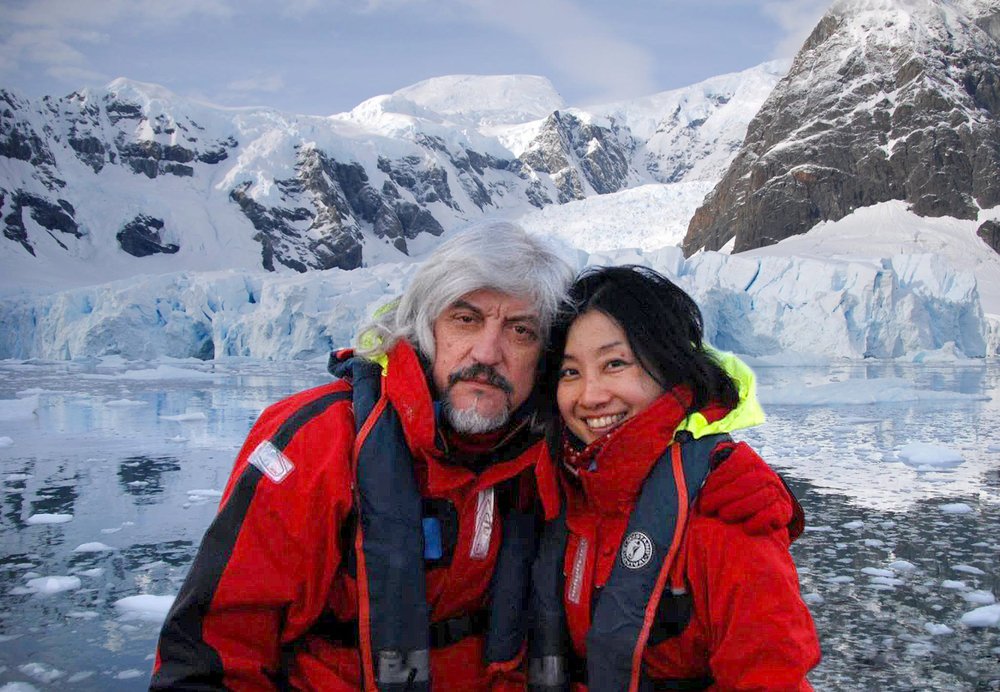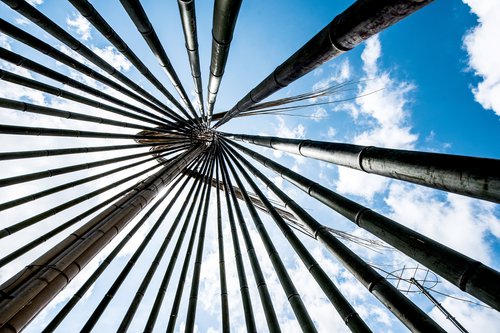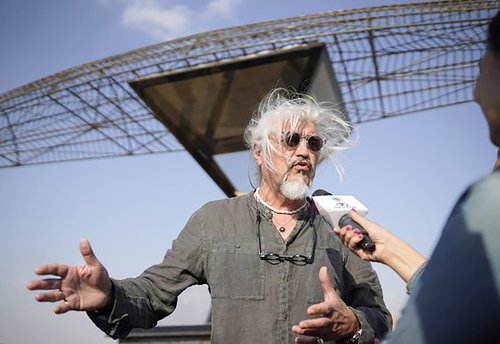From Hiroshima to Moscow: Wakana Kono Bridges Art and Culture

Wakana Kono with Alexander Ponomarev. Courtesy of Wakana Kono
Wakana Kono’s journey from a young student in Hiroshima to a renowned curator and professor at Waseda University is exceptional. Her newly published book, To Live as Art, reveals her own deep passion for Russian contemporary art showing us how we can bridge any seemingly impenetrable cultural divides.
Imagine a young student from Hiroshima, arriving in perestroika-era Moscow from ceremonious and slightly depressed Japan. At that time, in the early 90s, Russia was caught in a vortex of a delusion of total freedom, revolution, infinite performance and poetic madness.
Today that student Wakana Kono is a professor of Russian literature and culture at Waseda University, Japan's leading university for the humanities. She holds three doctoral degrees from universities in Japan and Russia. In addition, when she is not teaching or writing and translating, she is curating art projects by artists from the post-Soviet space, participating mainly in regional art triennales, including Echigo-Tsumari and Setouchi.
Six years ago, I was introduced to Wakana Kono by Emilia Kabakov (b. 1945). At that time, it was hard to perceive how important her role was for Russian-speaking art represented in Japan. She is constantly busy translating, organising, curating, inviting, assisting, and comforting us. And finally, last year, she published her first—and hopefully not her last—book about Russian Contemporary art, called ‘To live as Art’.
I met with her in the first weekend of 2025 in Tokyo to talk about her work.
U.D.: Wakana, konnichiwa. Congratulations on the publication of your book! What an enormous achievement, with both historical and cultural value. But it strikes me as also a very personal text. You travelled in Antarctica with Alexander Ponomarev, you were in touch with Anna Alchuk before her tragic death, you took part in a photo project of Oleg Kulik. How did your fascination with Russian contemporary culture begin?
W.K.: It all started with studying the Russian language. I visited Moscow for a week in 1992, with a brief stop in St. Petersburg, and then, in 1993, I did a two-month internship at the Journalism Faculty of Moscow State University. At the time, I didn’t have any opportunity to immerse myself in the art scene. However, upon returning to Japan, I planned to start research on the work of Ilya and Emilia Kabakov. Unfortunately, writing about living artists wasn’t encouraged, and there were no professors in Japan who could supervise me. Instead, I was advised to write about Andrei Bely. In Russian culture, the bond between literature and art is very strong. All three of my dissertations, in one way or another, were dedicated to visual symbols in Andrei Bely’s works.
However, my deep dive into the world of contemporary art began with translating the work of the Kabakovs and other Moscow conceptualists. In 1999, there was a major Kabakov exhibition in Japan, and my academic advisor, Professor Mitsuyoshi Numano asked me to translate Ilya Kabakov’s texts for a book and a catalogue accompanying the exhibition. Around the same time, Dmitry Prigov and Vladimir Sorokin came to a residency in Hokkaido. Later, all three—Kabakov, Sorokin, and Prigov—met up in Tokyo. I was there as well. That’s how my personal acquaintance with this world began.
In the summer of 1999, I entered the graduate program at RSUH to write a dissertation on Andrei Bely. It was a fascinating topic. During the day, I wrote and gathered materials. In the evenings, I attended exhibitions and literary evenings. Back then, I was just an unknown Asian postgraduate student, not a Japanese curator. But everyone was very welcoming, gifting me albums and reading poetry. It was a wonderful, open world, unlike contemporary Japan. I wrote articles and essays about Russian contemporary artists in Japanese. One of them about Kabakov’s children’s drawings garnered significant interest among colleagues, and I was offered to stage an exhibition. That was the first exhibition where I participated in a new role, as a curator.
U.D.: How are Russian artists perceived in Japan? Russian literature is well-known, but does that extend to contemporary art?
W.K.: In Japan, American and European artists are well-represented, but Slavic Eastern Europe, Russia, and Ukraine are poorly covered. My goal is to write more and showcase the works of contemporary artists from the post-Soviet region here.
Unfortunately, there isn’t a single well-equipped library for studying post-Soviet culture in Japan. Most of the resources are in personal archives. In Japan, there are three researchers, including myself, who are actively involved in this field and collect books. There’s a Slavic Centre in Hokkaido with a decent library, but it lacks materials on contemporary art. Something needs to be done.
U.D.: Every author has the freedom to choose their subjects for art historical research. However, there’s always a strategy for selecting artists. How did you choose yours?
W.K.: Recently, a Japanese critic, Masashi Miura, wrote a short review of my book, calling it an encyclopaedia of Russian contemporary art. I’m flattered, but I think that’s not entirely accurate. In the first chapter, I tried to mention as many names as possible that played a significant role in the history of contemporary art. In the second chapter, I wrote about important themes: gender issues, art during COVID, nostalgia, art and war. In the third chapter, I focused on Russian artists who travelled to Japan and are well-known to Japanese audiences through regional projects: Leonid Tishkov, Tatyana Badanina, Vladimir Nasedkin and Alexander Ponomarev.
I wrote about artists whose work I value and know well. Each of them is unique. For example, Tishkov conveys poetry in such a challenging time when poetry is struggling to survive. Ponomarev, on the other hand, explores the relationship between human beings and the broader world in his projects.
Unfortunately, I have not dedicated enough attention to regional artistic processes. In the book, I only briefly touched on the Dagestani art scene. I’d like to continue working in that direction.
U.D.: In your introduction, you write that art is a friend of humanity. But then you describe how artists and curators in Russia are fired, repressed, or imprisoned for this friendship. How would you explain this paradox?
W.K.: I wrote that art is a friend of humanity in general, not just in Russia, starting from the caves of Lascaux. A historian I know once argued that during times of upheaval, people don’t need literature or art. I disagree. It’s precisely in such times that art is most needed. During the Soviet era, the non-conformists found the time and energy to work "for the drawer." In the difficult post-Soviet period, artists continued to create, and audiences continued to observe. I believe this illustrates the importance of art and literature for humanity.
U.D.: How do you think the perception of Russian culture in Japan has changed since the full-scale war in Ukraine began in February 2022?
W.K.: Right after the war began, there were protests over Russian Classic music in Tokyo. But now, cultural exchanges continue. There hasn’t been a sharp cancellation of Russian culture in Japan, at least not like in Europe.
U.D.: Classical culture, of course, but what about contemporary culture?
W.K.: Last year, Tanya Badanina participated in the Echigo-Tsumari Triennale. I didn’t find a single negative review.
U.D.: In Russia, art is considered contemporary if it’s radical, like the actions of the Voina group or Pussy Riot. What about censorship in Japanese contemporary art? It seems to me that strong political statements in Japan are strictly censored even during the selection phase. What’s your opinion?
W.K.: There are censors in Japan too, especially in contemporary art. In 2019, during the Aichi Triennale, a curator invited artists who created a sculpture dedicated to comfort women, symbolizing the Japanese army’s guilt during WWII in Korea. There was an uproar, and within days, the sculpture was removed because some people felt offended.
It’s also difficult in Japan to display works depicting the emperor. Even without satirical intent, someone would likely take offense. So, yes, there are topics that come with challenges. Russian contemporary art, by contrast, is excluded from Japan’s historical context and doesn’t touch on our historical issues, so it doesn’t get filtered by censorship. For example, erotic art is shown here without restrictions, though with parental advisories. And books about Pussy Riot are readily available in Japanese—they’re quite popular.
U.D.: What should a Russian-speaking artist do to catch your attention and showcase their project in Japan?
W.K.: I currently collaborate with Japanese triennales. The selection isn’t up to me but the organizers. They are particularly interested in site-specific artists and projects connected to local culture.
As for my personal curatorial projects, there are many fascinating themes demanding my attention. First, Ukrainian contemporary art. Zhanna Kadyrova, Nikita Kadan, and others—we’ve worked extensively with them. I’d love to visit Ukraine to gather materials for a book and exhibition project. Secondly, I’d like to organize an exhibition of artists who focus on themes of war, such as Pavel Otdelnov. There have been many such exhibitions in Europe, but not yet in Japan. Lastly, I really want to curate an exhibition on Dagestani contemporary art.
U.D.: That’s unexpected! Why Dagestan?
W.K.: I deeply admire their national art. Although they hold Russian citizenship, their themes and imagery are very distinct. Japanese people know little about multicultural Russia. I’d like to showcase artists from national minorities.
Wakana Kono. Ikinobiru tame no āto : gendai roshia bijutsu. (To Live as Art. Contemporary Russian Art). 2024
Tokyo, Japan















